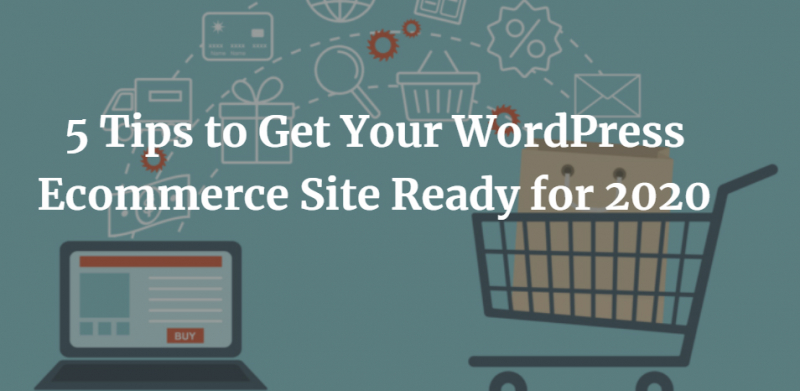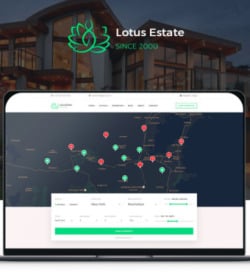E-commerce is one of the fastest-growing retail sectors in the world, and WordPress is an ecommerce powerhouse.

According to Statista, global ecommerce sales are expected to reach $4.206 trillion next year and 6.542 trillion by 2023.

WordPress not only provides various ways to build an online store for all types of products and markets, but it also provides various plugins to boost sales.
Whether you’re selling digital goods or physical goods, you need to keep your WordPress ecommerce site updated if it’s going to serve your business well in the year ahead.
Let’s have a look at five tips to get your WordPress ecommerce site ready for 2020.
Install Ecommerce Plugins for Essential Store Functions
The theme you choose defines the appearance of your store, but the plugins you choose define the functionality of your store. You’ll need to install a few plugins built especially for ecommerce stores.
BigCommerce for WordPress is one of the most popular ecommerce plugins. BigCommerce includes all the tools to power your back-end needs, including catalog management, processing payments, and managing fulfillment logistics.
WooCommerce is another hugely popular WordPress ecommerce plugin that allows users to enhance their store’s front-end, manage orders and customers, and optimize their store to boost sales.
Along with BigCommerce and WooCommerce, you can also install other plugins such as Easy Digital Downloads (EDD) to manage your digital products or WPForms to set up a contact form to get the details of your customers.
Add Security Features to Your Site
Every ecommerce store deals with a certain amount of sensitive data, such as debit/credit card information along with customers’ personal information like phone numbers and addresses. Your customers need to trust that all the information they’re providing will be protected from hacking and theft.
The best way to keep your site secure is by choosing a good hosting company that provides multiple layers of security. You can also integrate a WordPress security plugin such as Sucuri. They offer malware scanning, email alerts, core integrity check, and post-hack features to keep your customers’ data protected.
You can also consider adding an SSL (Secure Socket Layer) certificate and make sure that your site and all the integrated ecommerce plugins are updated on a regular basis.
Boost Your Rankings in the SERPs
You will need to work hard at SEO (search engine optimization) for your ecommerce site in order to increase its visibility in search results, and the best way to optimize your site is by writing blog posts that educate your customers about your products.
Producing good quality content (relevant, engaging, and interactive) will not only help you influence your site’s ranking in SERPs, but it will also help you build trust with your customers, resulting in an increase in sales.
Additionally, you can use the Yoast SEO plugin in WordPress to add meta descriptions and to manage the SEO settings of each page of your store. Make sure you include all the relevant keyword phrases in the meta description as well as in the content to attract more traffic.
Improve Your Loading Speed
Search engines rank websites with fast loading speed higher than the slow loading ones. So, if you want to improve your site to rank higher in SERPs, you will need to remove WordPress plugins and other things that make your site slow.
WordPress themes that have a lot of sliders or dynamic elements can make the website appealing, but they also increase the site’s loading times. Opt for a theme that uses a good framework such as Bootstrap, as it is a great way to improve your site’s loading speed.
Also, consider installing caching plugins such as W3 Total Cache or WP Super Cache to reduce the processing load on the server. Combining these plugins with a system-level page cache like Varnish can significantly improve your ecommerce site’s performance and ultimately speed up WordPress.
Make It Easier Than Ever to Navigate
Ecommerce sites with easy navigation increase user performance leading to more sales and revenue. Use autocomplete suggestions to speed up the entire search process and to let the users find the product they’re looking for, instantly.
Have a look at S’well’s website. When I enter “bottle” in the search box, the search returns a list of top-selling bottles. Moreover, I’m able to see a photo of the bottle along with the price. It allows users to make an informed decision and makes shopping interesting.
Use meaningful labels to differentiate products of different categories. Re-list subcategories to move to the specific product list. For example, if you sell apparel, you can use “Shirts” as a menu label and “Casual Shirts” as a subcategory to guide users to the specific page.
Final Thoughts
Install relevant plugins to enhance your site’s functionality. Updating your WordPress ecommerce site regularly will help you boost your website’s presence in SERPs and will help you attract more organic traffic.
Make sure your customer’s data is secure by adding security plugins, and improve your site’s loading speed by installing caching plugins. Also, ensure that your site visitors can navigate through all your products easily to improve sales and generate more revenue.







